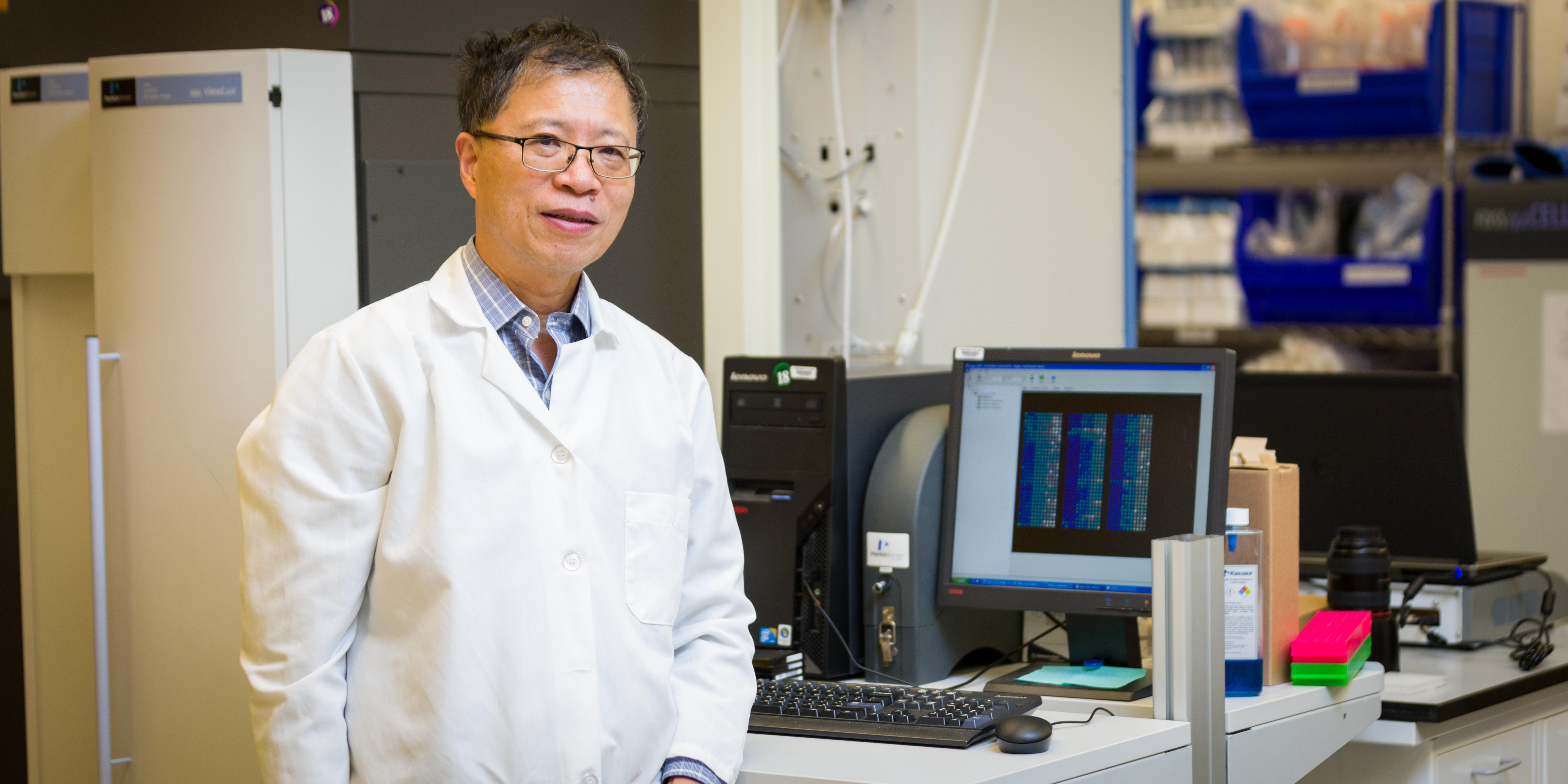
A team of researchers including Wei Zheng, Ph.D., developed the biological activity-based modeling (BABM) process, a new approach using virtual screening tools to help speed drug discovery.

A team of researchers including Wei Zheng, Ph.D., developed the biological activity-based modeling (BABM) process, a new approach using virtual screening tools to help speed drug discovery.
What you need to know
A new approach, called biological activity-based modeling (BABM), aims to speed up drug discovery using virtual screening tools. BABM helps researchers quickly scan thousands of drugs and collections of existing drug-like compounds to help identify new potential treatments for diseases, including COVID-19.
In a new study, researchers identified nearly 100 compounds with the potential to fight SARS-CoV-2, the virus that causes COVID-19.
What is BABM for?
BABM is a new approach for finding potentially useful drug compounds through virtual screening. In virtual screening, scientists use computers to analyze large collections of existing compounds for ones that have the potential to be useful drugs. Traditionally, they have looked for compounds that have the same structure as a compound that is already known to be effective against a particular target, such as a viral protein.
With BABM, scientists don’t need to know the compound’s structure. Instead, they use measurements of a compound’s biological activity to predict whether it will be effective.
What did the scientists do?
National Center for Advancing Translational Sciences (NCATS) scientists tapped the vast pool of data on more than 500,000 compounds in their in-house collection.
First, they confirmed that BABM would work by using it to identify compounds that were shown to be effective against the Zika and Ebola viruses.
Next, they applied BABM to look through the NCATS collection for compounds with the potential to fight SARS-CoV-2. They identified 311 compounds.
Finally, an outside laboratory tested those 311 compounds against the live SARS-CoV-2 virus. In that testing, 99 of the 311 compounds showed promise for fighting the virus — an impressive success rate.
The researchers shared their data and source code so that others can apply this approach to any collection of compounds, and other researchers can now evaluate those 99 compounds for their potential to fight COVID-19.
Why is this research important?
This method could lead to many different drug discoveries for diseases, including new treatments for COVID-19.
How can I learn more?
More information about BABM and its potential for discovering treatments beyond COVID-19.
Improving the Drug Development Process
NCATS supports a variety of research on innovative methods to improve the drug development process.
Sources
Huang, R., Xu, M., Zhu, H., Chen, C. Z., Zhu, W., Lee, E. M., He, S., Zhang, L., Zhao, J., Shamim, K., Bougie, D., Huang, W., Xia, M., Hall, M. D., Lo, D., Simeonov, A., Austin, C. P., Qiu, X., Tang, H., & Zheng, W. (2021). Biological activity-based modeling identifies antiviral leads against SARS-CoV-2. Nature biotechnology, 10.1038/s41587-021-00839-1. Advance online publication. https://doi.org/10.1038/s41587-021-00839-1

News and Stories
Read stories about the efforts underway to prevent, detect, and treat COVID-19 and its effects on our health.
 An official website of the United States government
An official website of the United States government

